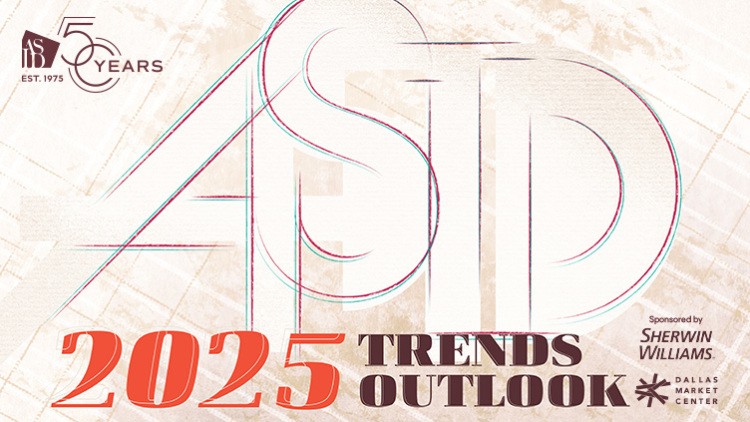Interior design is adapting to changes in the workforce and workplace, tech, wellness and lifestyle, says ASID’s 2025 Trends Outlook report
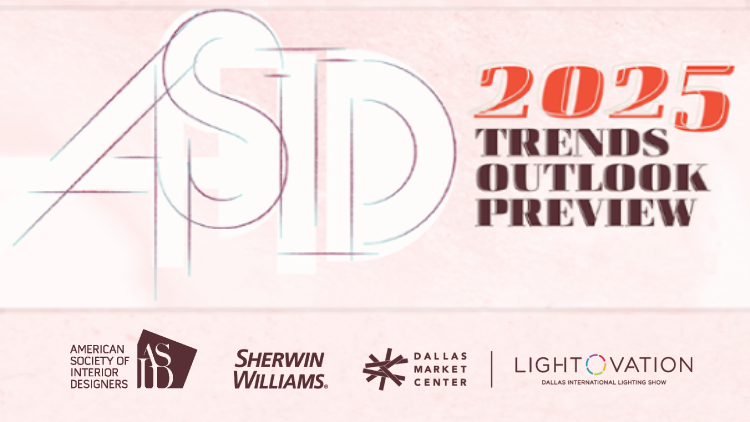
by Eileen McMorrow
January 31, 2025 — From generational shifts and the economy to higher education and work and retirement trends, the ASID 2025 Trends Outlook report from the American Society of Interior Designers explores transformative shifts that shape our society, economy and built environments, responding to an era marked by uncertainty and redefined priorities. The report highlights trends that integrate technological advancements, cultural narratives and wellness principles, offering a roadmap for rethinking the future of design.
The report analyzes the forces shaping the interior design landscape. Addressing changes in the workforce, technology, the economy, lifestyles and wellness, the report explores a growing focus on creating environments that inspire joy, foster well-being, and harmonize sustainability with timeless craftsmanship. From neuro-inclusive design and multigenerational workforce dynamics to the integration of smart technologies and outdoor living, these trends are redefining the future of interior spaces in an era of rapid change.
“Design touches every aspect of our lives, shaping how we work, live, and connect with the world around us,” said Khoi Vo, president and chief executive officer, ASID. “ASID’s 2025 Trends Outlook report underscores the transformative power of design in addressing society’s shifting priorities — from fostering wellness and sustainability to embracing technology and cultural storytelling. ASID remains committed to equipping the design community with the tools and insights they need to drive meaningful change and create spaces that inspire joy, purpose and resilience.”
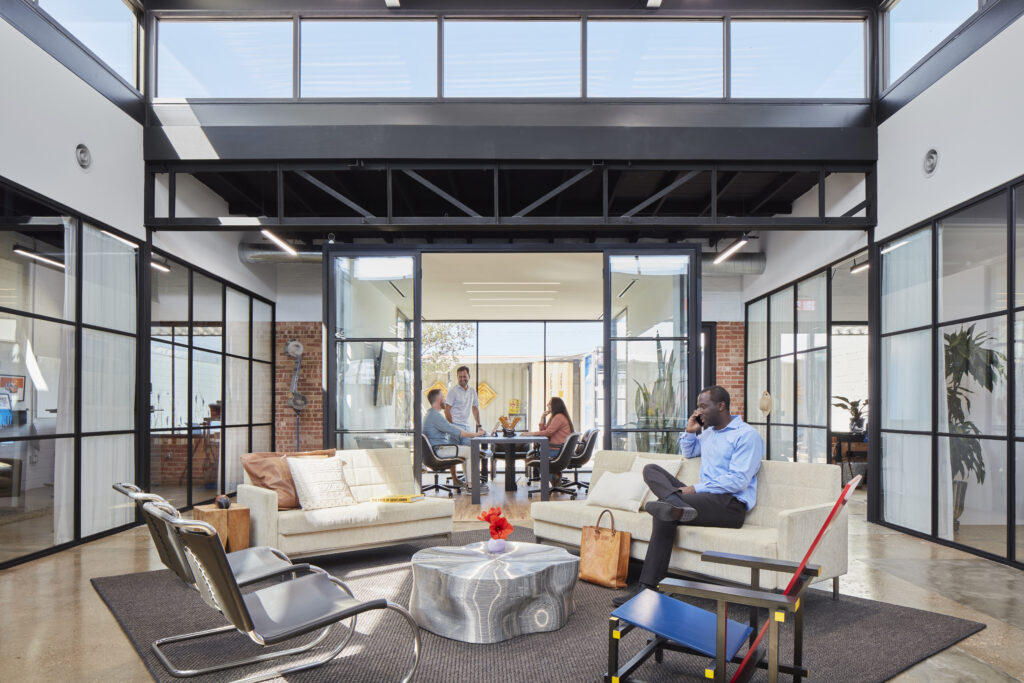
Retirement trends are predicted to impact the workforce as eligible workers leave. Lightcast, a provider of global labor market data and analytics, released a report in September illustrating “how a deluge of Baby Boomer retirements, plummeting childbirth rates, and historically low labor force participation will compound to create a deficit of 6 million workers by 2032,” predicting that “healthcare, hospitality, and service industries will be hardest hit.” According to Lightcast, the decline in the workforce is being driven by:
1) a drop in the average retirement age (now 61 years of age),
2) a decrease in U.S. born labor force, given declining birth rates, coupled with increased pressures on immigration, and
3) a skills mismatch between workers and available jobs. To solve the deficit, experts recommend “promoting trade specialties, cross-training new generations, incorporating AI, and employing migrants to help fill positions.
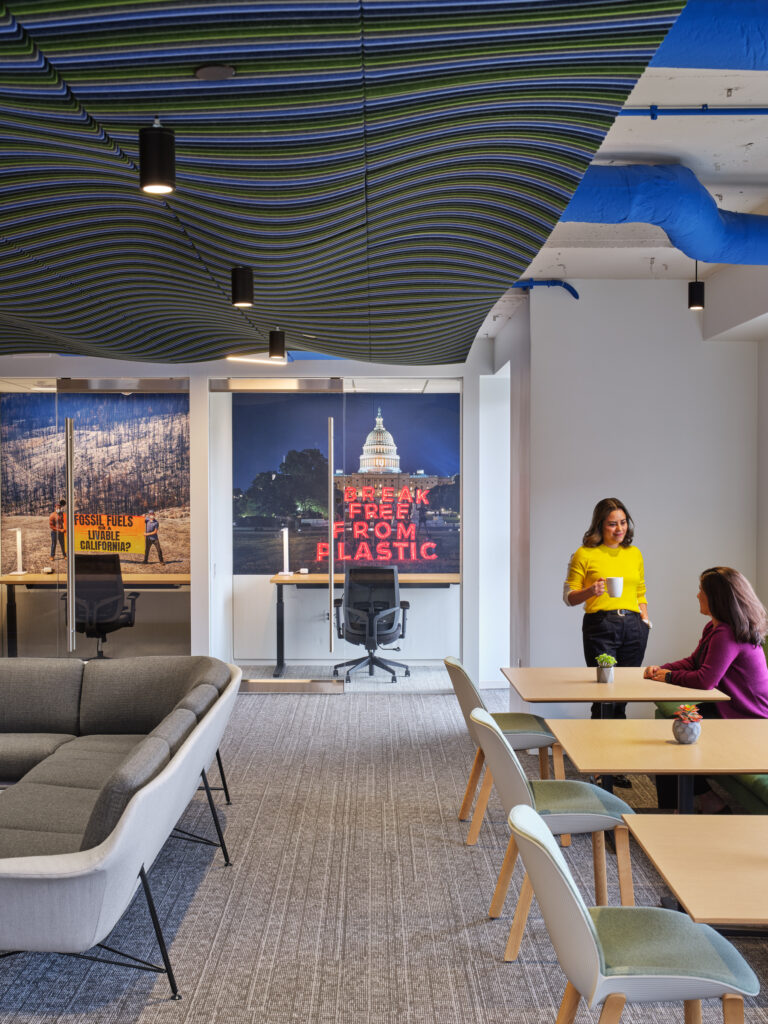
Multigenerational Workforce gains reverse mentoring
The Multigenerational Workforce has fully arrived, and business managers are trying to create a cohesive corporate culture that “aligns with the needs, preferences and values of different individuals.” Notably, Gen X professionals have moved into management and leadership roles that are charged with mediating these generational differences. To their advantage, many in Gen X tend to be more independent and adaptable than previous generations, bringing greater transparency and direct communication to the workplace.
“The latest iteration of McKinsey’s American Opportunity Survey (AOS) reveals a generational gap in the workplace, with marked differences among how Gen Z and other generations view themselves, their ability to work effectively, and their futures,” notes the report. In many offices, the tension and frustration over unmet expectations for younger generations is strong, but given the rise in digital tools, the traditional top-down approach to mentoring is being flipped on its head, offering a unique opportunity for an exchange of skills. Baby Boomers are sharing their experience and wisdom with younger staff while Millennials and Gen Z are teaching them tech skills.
Entrepreneurial Gen Z leads by consensus
“Gen Z wants leaders who guide by consensus,” seeking less hierarchical and [more] transparent organizations,” the ASID report indicates. Gen Zers prefer different leadership styles, like the rotating, collaborative, and service leadership models that all build consensus and allow more people to participate in decision-making and problem-solving. In tandem with their interest in the internet economy, 93% of Gen Z have explored options for owning a business, and 75% plan to be an entrepreneur, according to research conducted by ZenBusiness. Additionally, Gen Z is electing to change jobs instead of moving into management roles, dismantling the traditional corporate ladder, often resulting in faster career advancement.
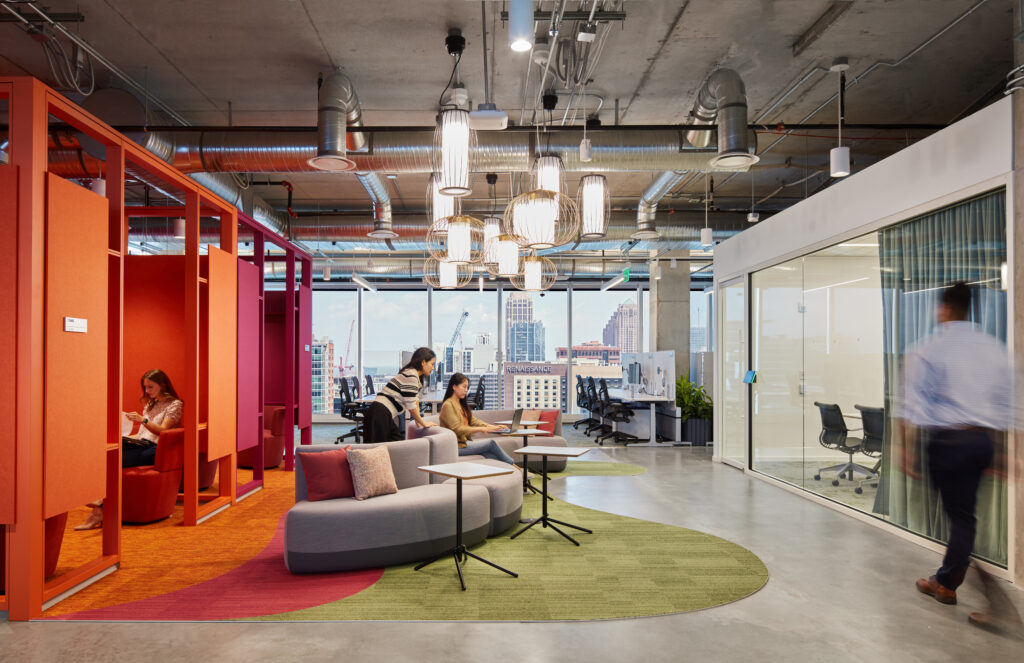
The ASID 2025 Trends Outlook report is the first of the association’s annual three-part Outlook report series, with the Economic Outlook and State of Interior Design reports to be released later in 2025. The research series is sponsored in part by Sherwin-Williams; additional support for the Trends Outlook report comes from Dallas Market Center. Available for download on the ASID website, the 2025 Trends Outlook report is free for ASID members and is otherwise available for purchase for $179.
At this link, readers can gain access to the ASID 2025 Trends Outlook report to learn more about the forces impacting design that are outlined below.
Work & Retirement
Multigenerational Workforce: Generational diversity within offices fosters collaboration.
AI Transformation: Paving the Way to a Shorter Workweek: Generative AI has the potential to ease tasks within the workforce, including the workweek’s length.
Economy
- Inflation, Tariffs, & Global Market Impact: Younger generations become committed to supporting small businesses in response to certain policies within global markets.
- Shifting Perceptions of Education: Gen Z is increasingly intrigued with attending trade schools versus college, as there’s a prevalent increase in wages within such industries.
Technology
- Personalization & Customizability: Experiences spanning an abundance of design sectors are enhanced with hyper-personalized AI services.
- Smart Homes & Accessibility: Smart technologies become more affordable, making them increasingly accessible and relevant across all demographics.
Lifestyles & Attitudes
- Mixing Styles & Cultural Narratives: Incorporating traditional elements with regional and nostalgic influences becomes popular within designers’ work.
- Silver Tsunami & Adaptive Living: The demand for adaptable living solutions is growing in tandem with the aging populating.
- Acceptance of Skepticism: Concerns about transparency and trust towards long-standing institutions are increased.
- Artisan Craft Revival: Consumers drive a demand for timeless, durable pieces.
- Outdoor Integration: With the urge for social engagement amongst nature comes the increase in blending indoor and outdoor spaces.
Wellness & Resiliency
- Design for Joy: Incorporating certain shapes and colors for mental health benefits is increased within design.
- Sustainability: Sustainable design becomes driven by circularity and environmentally friendly materials.
- Toxic Awareness: Toxins in the environment lead certain design decisions, as consumers become aware of negative health effects.
- Lighting Innovations: Lighting solutions become multi-faceted with different means of improvements, in terms of both health and social responsibility.
- Neuro-Inclusive Design: Designing for neurodiversity increasingly encompasses a range of elements, as the awareness to its benefits expands.

